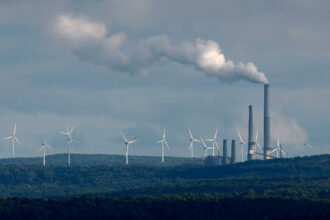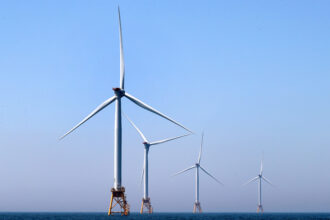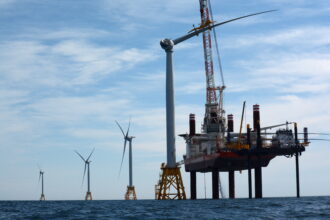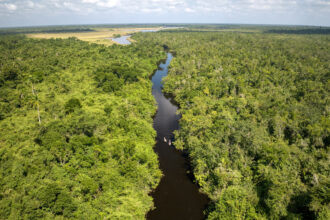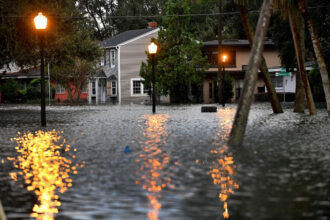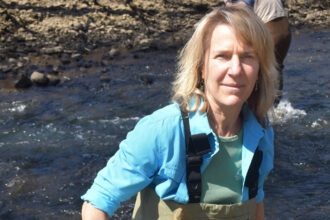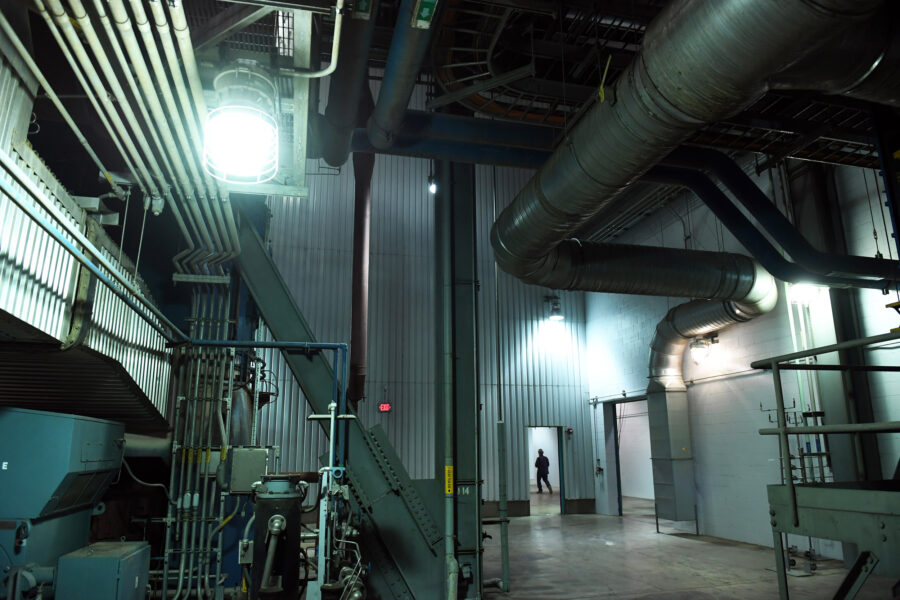Calling it a timely and necessary initiative, industry groups and clean energy advocates hailed a multimillion dollar partnership between the U.S. Department of Energy, the states of Maryland and Massachusetts and leading research institutes to establish a center of excellence for offshore wind energy. The announcement comes as multiple states struggle to implement offshore wind projects and ensure the clean energy transition is reliable and equitable.
With roughly 40 partners positioned across the United States, the Academic Center for Reliability and Resilience of Offshore Wind (ARROW) is intended to drive progress toward the Biden administration’s goals of generating 30 gigawatts of offshore wind by 2030, a 100 percent clean electricity grid by 2035 and net zero emissions economy-wide by 2050.
Having committed to generate 8.5 gigawatts of wind energy by 2031, Maryland is expected to play a key role in achieving the national target of 30 gigawatts. Recently, the state’s offshore wind market has faced financial headwinds, supply chain hiccups and regulatory bottlenecks such as permitting delays, resulting in delayed and canceled projects.
Based at the University of Massachusetts Amherst, the new national center of excellence will lay the groundwork for producing a qualified domestic offshore wind workforce. The initiative will receive $4.75 million from the DOE’s Wind Energy Technologies Office over five years, another $4.75 million in matching funds from the Massachusetts Clean Energy Center and $1 million from the Maryland Energy Administration. Its total budget, according to a UMass press release, will reach $11.9 million with smaller investments from partner universities.
Three national laboratories, two state-level energy offices and industry groups across Massachusetts, Maryland, Illinois, Washington, South Carolina and Puerto Rico will also join the project.
ARROW’s goals include training 1,000 offshore wind professionals over the initial five years, carrying out research on infrastructure, atmospheric and ocean conditions, and engaging with stakeholder communities such as wind energy companies, grid operators, manufacturers, nonprofits, insurance companies and advanced technology developers.
“This will take some time to scale up, but it’s encouraging to see DOE and UMass bring so many of the right stakeholders together for this initiative, including two of the most critical states that are poised to shape the future of offshore wind development,” said Justin Balik, state program director of Evergreen Action, a climate advocacy organization.
He said the emphasis on workforce initiatives is a key need and something that DOE can directly influence with its convening power and resources. “As more projects are proposed in the coming months and years, the focus of the center on strategies to ensure equitable distribution of benefits should help develop some consistent and replicable best practices,” Balik added.
For Maryland, the offshore wind situation looked particularly wobbly when, in January, Ørsted, the Danish energy company, pulled out of its agreement to sell electricity from an offshore wind farm it planned to build off the coast of Ocean City, dealing a blow to the state’s goal of 100 percent clean energy by 2035.
Maryland’s total approved offshore wind projects, which include US Wind’s Momentum Wind and Ørsted’s Skipjack Wind, stands at 2,022.5 megawatts, enough to power about 600,000 homes and support 12,000 direct full-time jobs, according to the Maryland Energy Administration.
Jamie DeMarco, Maryland director of the Chesapeake Climate Action Network, said that initiatives like ARROW build the pipeline of people with the skills and experience needed to grow the offshore wind industry.
This story is funded by readers like you.
Our nonprofit newsroom provides award-winning climate coverage free of charge and advertising. We rely on donations from readers like you to keep going. Please donate now to support our work.
Donate Now“All major established industries have institutional anchors, and the Department of Energy’s announcement of a center of excellence is an important step in offshore wind’s inevitable rise to a major American industry,” DeMarco said, adding that the Biden Administration was bolstering the offshore wind industry and issuing new offshore wind lease areas across the country.
Jason Ryan, spokesperson for the American Clean Power Association, an industry group representing a broad array of clean energy companies, said the association is hopeful that ARROW’s activities will enhance the understanding, reliability and resilience of offshore wind, supporting the growth and expansion of the nascent offshore wind industry in the U.S.
“Offshore wind can play a major role in decarbonizing the U.S. electric grid, and meeting its potential will require skilled workers to propel us forward,” said Jeff Marootian, Principal Deputy Assistant Secretary for Energy Efficiency and Renewable Energy in a news release announcing the ARROW project. “This consortium will provide timely and relevant training and education to help foster the domestic offshore wind workforce of tomorrow and secure a clean energy future for all Americans.”







